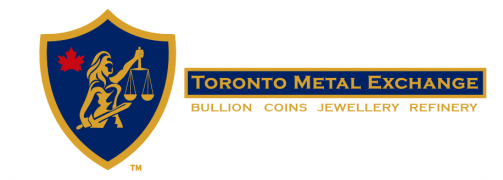glossay of hallmarks guide
Hallmarks Guide: Maximizing the Value of Your Precious Metals
Understanding the hallmarks on your gold, silver, platinum, and palladium items is crucial for determining their true value. Whether you’re an investor, collector, or someone looking to sell, knowing how to identify and interpret hallmarks can help you avoid undervaluing your assets, prevent fraud, and make informed financial decisions.
Many people acquire bullion, coins, or jewelry without keeping proper documentation. Over time, records get lost, and without paperwork, the only reliable way to verify an item’s composition and worth is through its hallmark. If you are uncertain about a piece, don’t worry—professional services like Toronto Metal Exchange offer free, secure testing to establish purity and ensure you receive fair market value when selling.
What is a Hallmark?
A hallmark is an official stamp found on objects made from precious metals, confirming their purity, authenticity, and often their origin. These markings are legally required in many countries and provide critical information such as:
✅ The metal’s purity (measured in karats or fineness)
✅ The manufacturer’s or assay office’s mark
✅ Additional optional markings, such as date stamps or special commemorative symbols
Hallmarks can be found in discreet locations on different items:
🔹 Rings – Inside the band
🔹 Necklaces & Bracelets – Near the clasp or on a small tag
🔹 Flatware & Cutlery – On the handles or underside
🔹 Coins & Bullion – On the face or rim
🔹 Decorative Items (bowls, trays, candlesticks, etc.) – On the base or edges
Due to wear and age, hallmarks may fade or become difficult to see. Using a magnifying glass or bringing your item to a professional can help confirm authenticity.
Why Hallmarks Matter: The Financial Importance of Identification
Precious metals represent a significant financial asset, but their value depends on purity. Without proper hallmark verification, you risk:
⚠️ Selling below value – You may unknowingly sell a high-karat gold item for less than its worth.
⚠️ Buying fraudulent items – Counterfeit or plated metals can be mistaken for solid gold or silver.
⚠️ Losing investment value – Precious metal prices fluctuate; knowing the exact purity ensures you maximize returns.
In the same way that government-issued bullion coins make valuation simple, hallmarks provide a standardized method to assess an item’s composition. Recognizing and understanding hallmarks ensures you receive the best price when buying or selling.
What Metals Are Hallmarked?
The four primary hallmarked metals are:
💰 Gold – Hallmark required for items over 1 gram
🥈 Silver – Hallmark required for items over 7.78 grams
🔹 Platinum – Hallmark required for items over 0.5 grams
⚪ Palladium – Hallmark required for items over 1 gram
Each of these metals is alloyed with others for durability. Regulations mandate minimum purity levels before an item can legally bear a hallmark, ensuring transparency in the market.
Understanding Gold Hallmarks & Karats
Gold purity is measured in karats (K) or parts per thousand. Here’s how karat markings correspond to gold content:
| Hallmark | Purity | Gold Content (%) |
| 999, 999.9 | 24K | 99.9 – 100% (pure gold) |
| 916, 917 | 22K | 91.6% |
| 750 | 18K | 75% |
| 585, 583 | 14K | 58.5% |
| 417 | 10K | 41.7% |
| 375 | 9K | 37.5% |
| 333 | 8K | 33.3% |
Gold items may also bear additional markings, such as manufacturer logos or country-specific symbols. Lower karat gold contains more alloy metals like copper and zinc, making it more durable but less valuable.
Gold-Plated & Gold-Filled Items: How to Identify Them
Not all gold jewelry is solid gold. Some pieces are gold-plated or gold-filled, which significantly impacts their resale value.
🔸 Gold-Plated (GP, GEP, RGP) – A thin layer of gold applied over a base metal. No significant gold content.
🔹 Gold-Filled (GF) – A thicker bonded layer of gold, often marked as “1/20 14K GF” (meaning 5% of the item’s weight is gold).
Gold-plated and gold-filled items have little to no intrinsic metal value and are not purchased by Toronto Metal Exchange for their gold content.
Silver Hallmarks: Identifying Sterling & Silver-Plated Items
Sterling silver must contain at least 92.5% pure silver, often marked as:
✔ 925
✔ Sterling
✔ Lion Passant (UK sterling symbol)
Silver-plated items (often marked as EPNS, EP, or Silverplate) have only a thin layer of silver over a base metal and do not retain resale value like solid silver.
Platinum & Palladium Hallmarks
Platinum and palladium are both highly valuable and durable. Their hallmarks follow a similar numbering system:
| Hallmark | Metal | Purity (%) |
| 999 | Platinum | 99.9% |
| 950 | Platinum | 95% |
| 900 | Platinum | 90% |
| 500 | Palladium | 50% |
| 950 | Palladium | 95% |
| 999 | Palladium | 99.9% |
Older platinum and palladium pieces may not always have these hallmarks, but professional testing can confirm their authenticity.
How to Find Hallmarks on Your Precious Metal Items
To quickly locate hallmarks:
🔎 Jewelry – Check the inner band (rings) or clasp area (necklaces, bracelets)
🔎 Flatware – Look on the back of handles (spoons, forks, knives)
🔎 Decorative Items – Check the underside or base
If you cannot find a hallmark, or if it’s worn off, a professional gold and silver buyer can perform tests to verify the purity.
Maximizing Your Returns: Sell with Confidence
Understanding hallmarks is an essential financial skill. It allows you to:
💰 Sell your items at their true market value
💰 Avoid being underpaid or scammed
💰 Ensure you’re buying authentic, high-quality metals
If you are unsure about an item’s value, Toronto Metal Exchange offers free, expert testing to confirm authenticity and purity—helping you get the best possible price when selling your gold, silver, platinum, and palladium.
Cash in Your Precious Metals Today!
For secure, professional evaluations and top-dollar payouts, contact Toronto Metal Exchange. Bring in your items or ship them securely—we make selling gold and silver from home easy!

